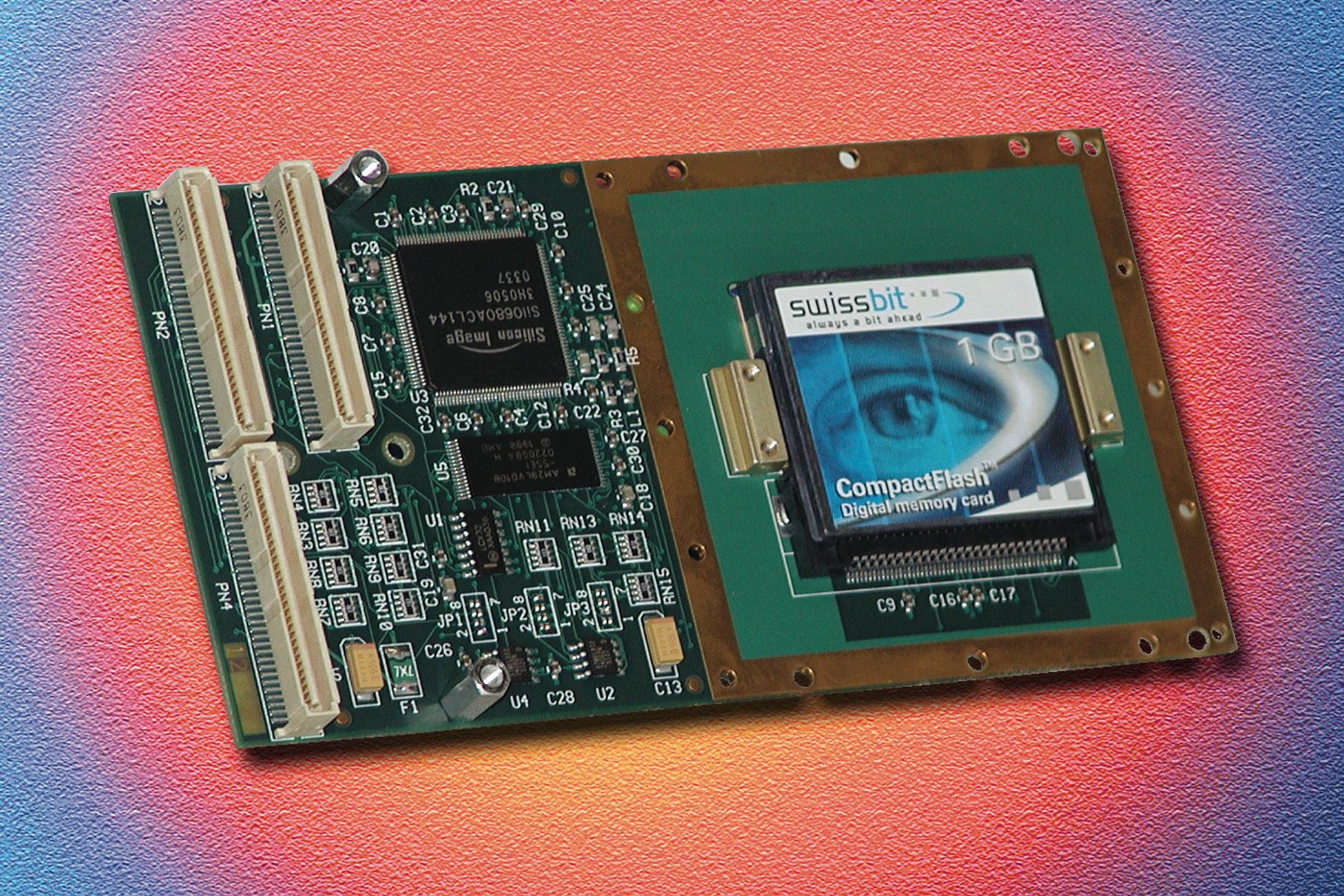Induction: July 2015
In the mid-1990s the embedded computing industry became entrenched in a heated debate over mezzanine card standards for 3U and 6U boards. At one point, 22 different proposals were on the table, not to mention at least as many more proprietary options. S-bus, advocated by Sun Microsystems, was gaining traction.
That all changed when a handful of industry-leading companies placed their bet on the emerging efforts led by Force Computers and Digital Equipment Corporation to marry S-bus mechanicals with the PCI bus.
In 1994 a number of companies joined together to launch the “We Agree … It’s PMC!” campaign, including Concurrent Technologies, Digital Equipment Corporation, Force Computers, Heurikon, Intel, Interphase, Mercury Computer Systems, Molex, Motorola Computer Group, Newbridge Microsystems, Schroff, Themis Computer, and Vigra. Architectures supporting PMC included VMEbus, VME64, Futurebus+, Multibus I, and Multibus II.
A PCI Mezzanine Card or PMC is a printed circuit board manufactured to the IEEE P1386.1 standard (chaired by VITA Technologies Hall of Famer Wayne Fischer). This standard combines the electrical characteristics of the PCI bus with the mechanical dimensions of the Common Mezzanine Card or CMC format (IEEE 1386 standard, see Figure 1).
A PMC can have up to four 64-pin bus connectors. The first two (P1 and P2) are used for 32-bit PCI signals; a third (P3) is needed for 64-bit PCI signals. An additional bus connector (P4) can be used for non-specified I/O signals. In addition, arbitrary connectors can be supplied on the front panel or bezel.
The PMC standard defines which connector pins are used for which PCI signals. It also defines the optional 64 P4 connector pins for use of arbitrary I/O signals.
Carrier cards that accept PMCs are usually made in the Eurocard format, which includes single-, double-, and triple-height VMEbus cards, CompactPCI cards, and more recently, VPX cards. One PMC fits on a standard 3U carrier card, while 6U models (typical for VMEbus cards) can carry up to two PMCs. Low-profile motherboards also can take advantage of the PMC architecture.
The PMC specification evolved into Processor PMC (PrPMC), which added extensions so the PMC could act as a bus master, making it possible for it to be the host processor card in a system.
Key Contributions
- 1994: PMC (IEEE P1386.1) emerged out of efforts led by Force Computers and Digital Equipment Corporation to combine S-bus mechanicals with the PCI bus.
- 1994: DEC demonstrates PMC on an Alpha VME board.
- 2000: PMC P4 (ANSI/VITA 35) provides pin assignments for PMC P4 connector to VME P0 and P2 connectors.
- 2001: Conduction-Cooled PMC (ANSI/VITA 20) – Defines the mechanical requirements for compliance with conduction-cooled PMC modules.
- 2003: PrPMC (ANSI/VITA 32) – Incorporates a set of extensions to the PMC standard, which creates a new class of PrPMC cards.
- 2003: PCI-X for PMC and PrPMC (ANSI/VITA 39) – Integrates the PCI-X bus capability from PCI bus to PMC-based products.
- 2008: XMC: Switched Mezzanine Card base specification was introduced, bringing switch fabric interconnection to mezzanine cards for 3U and 6U.
